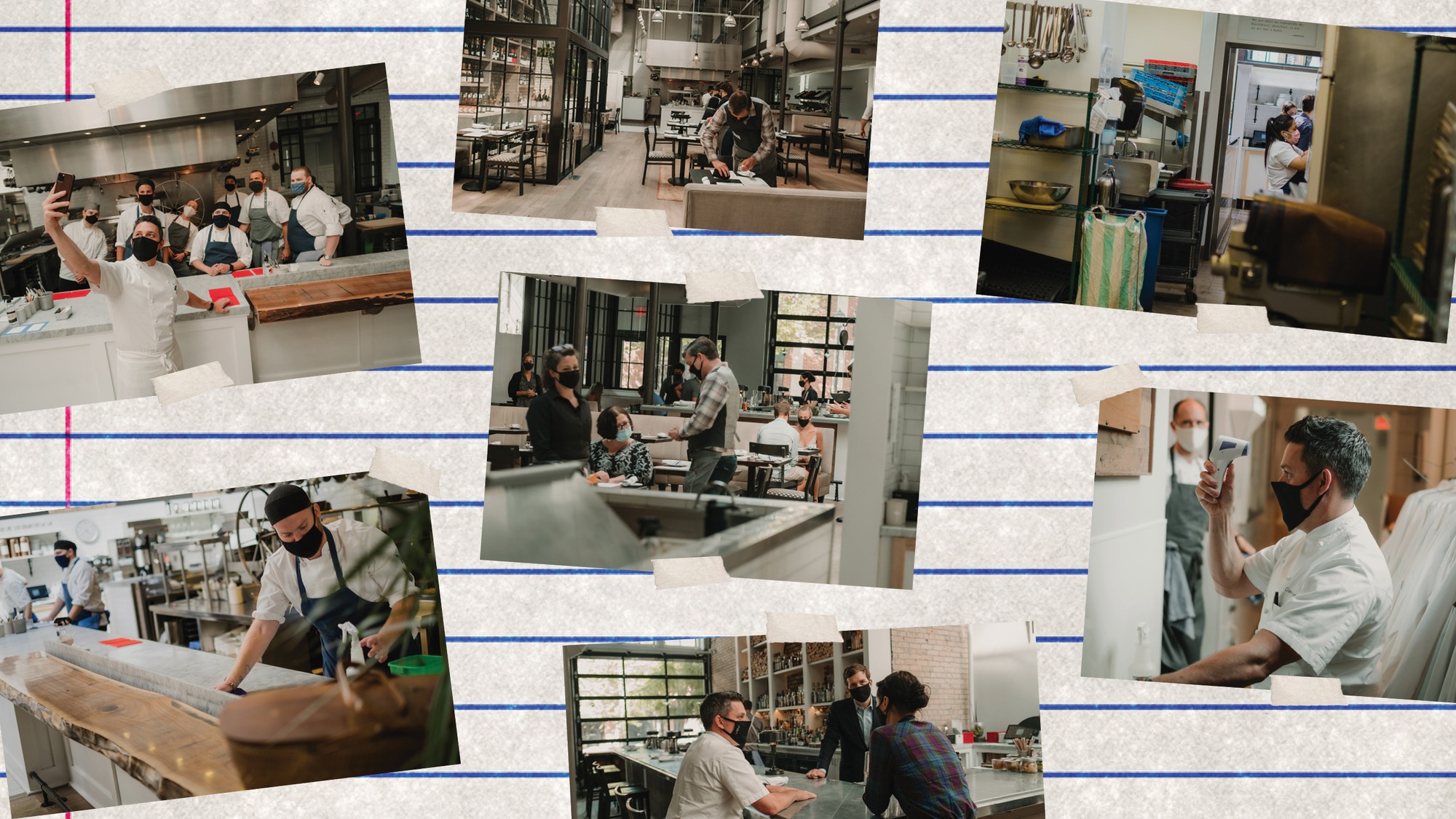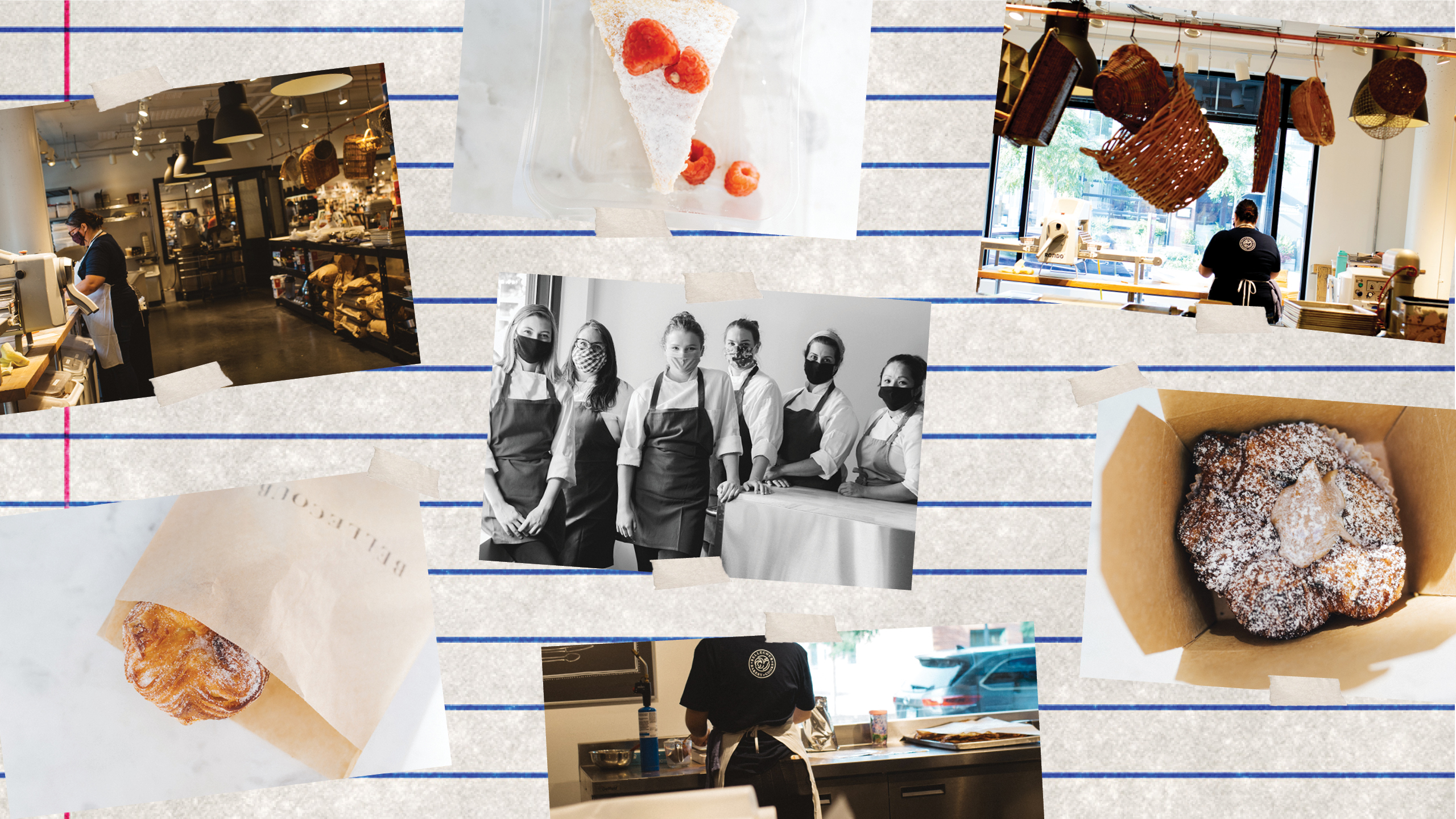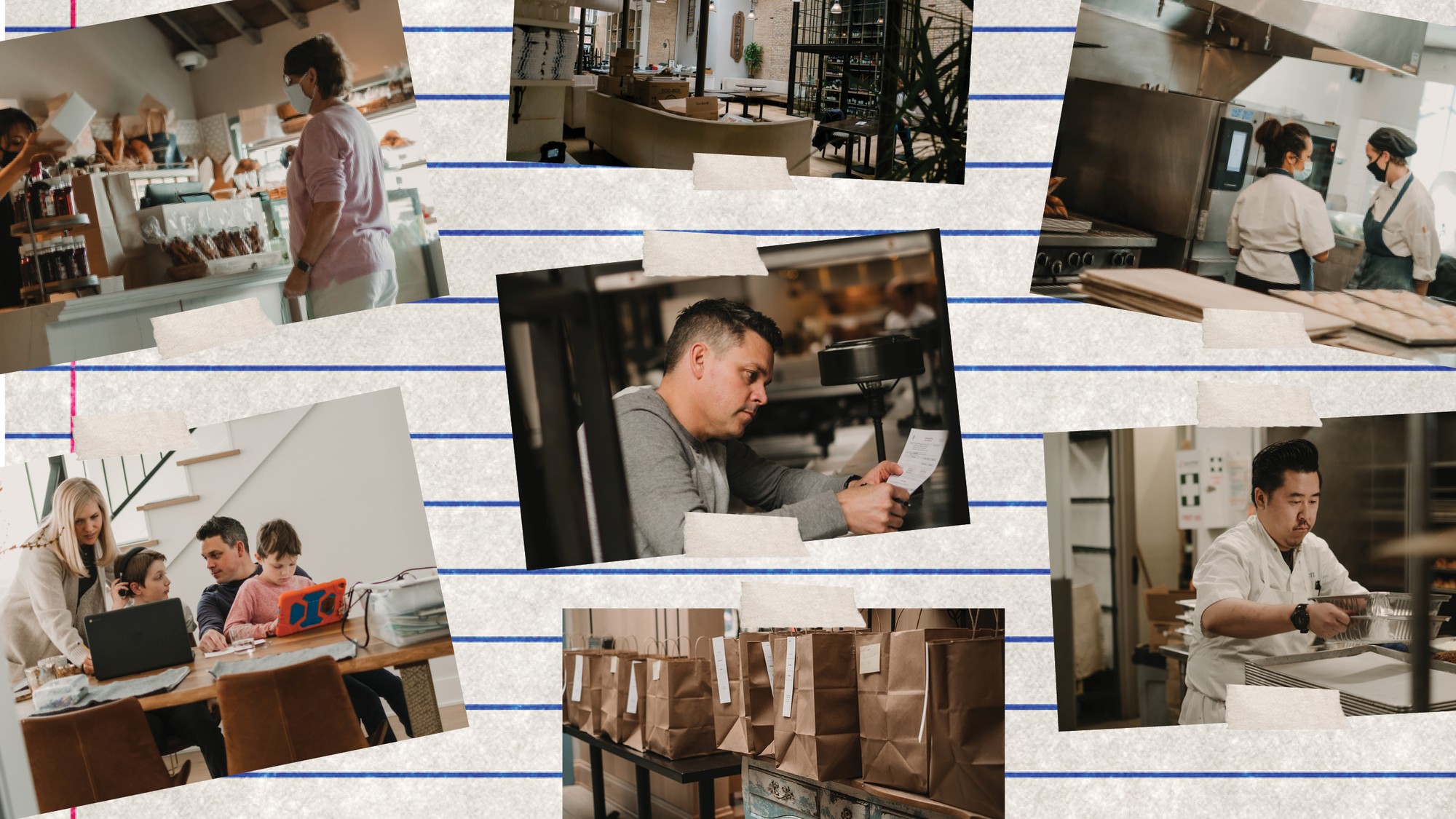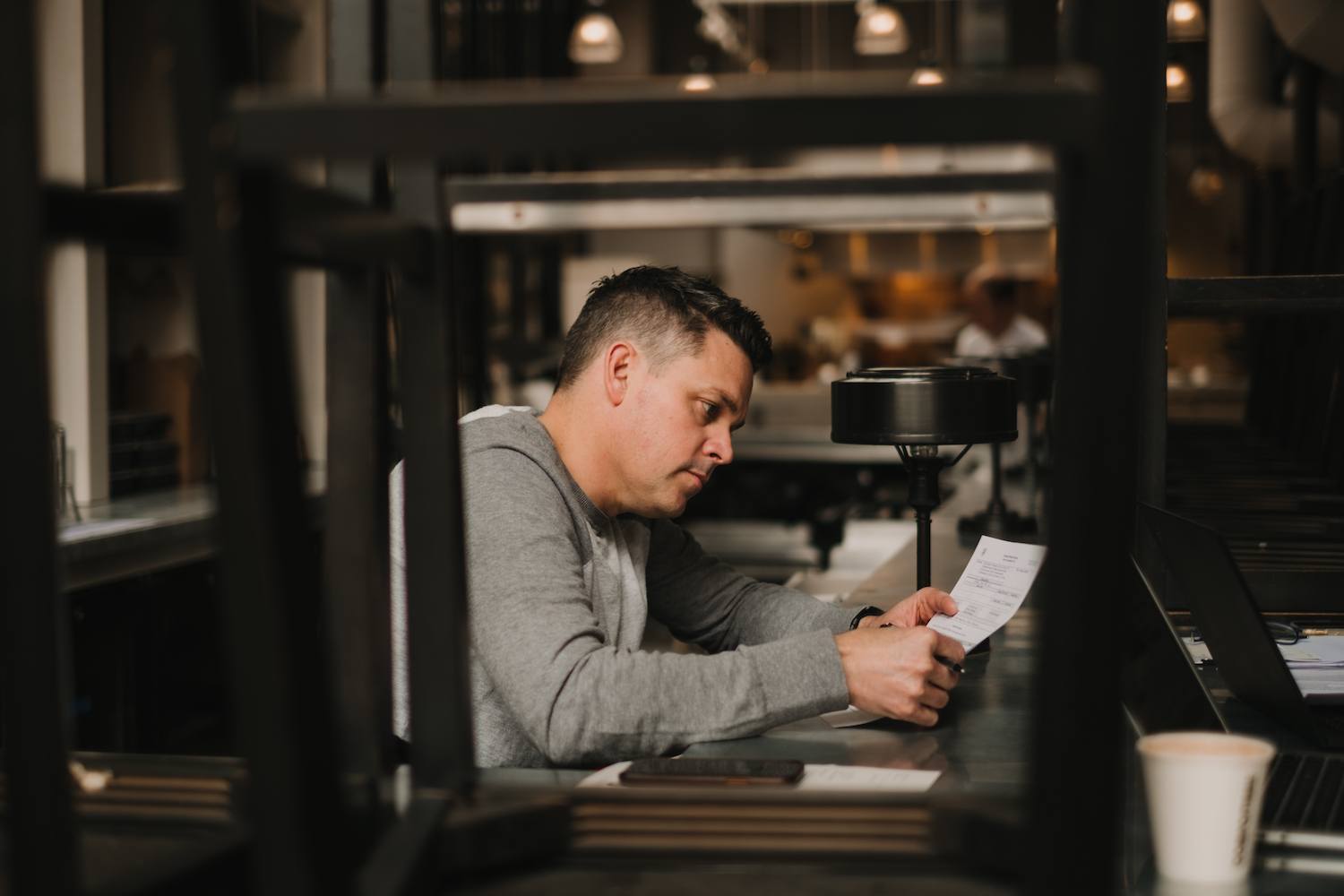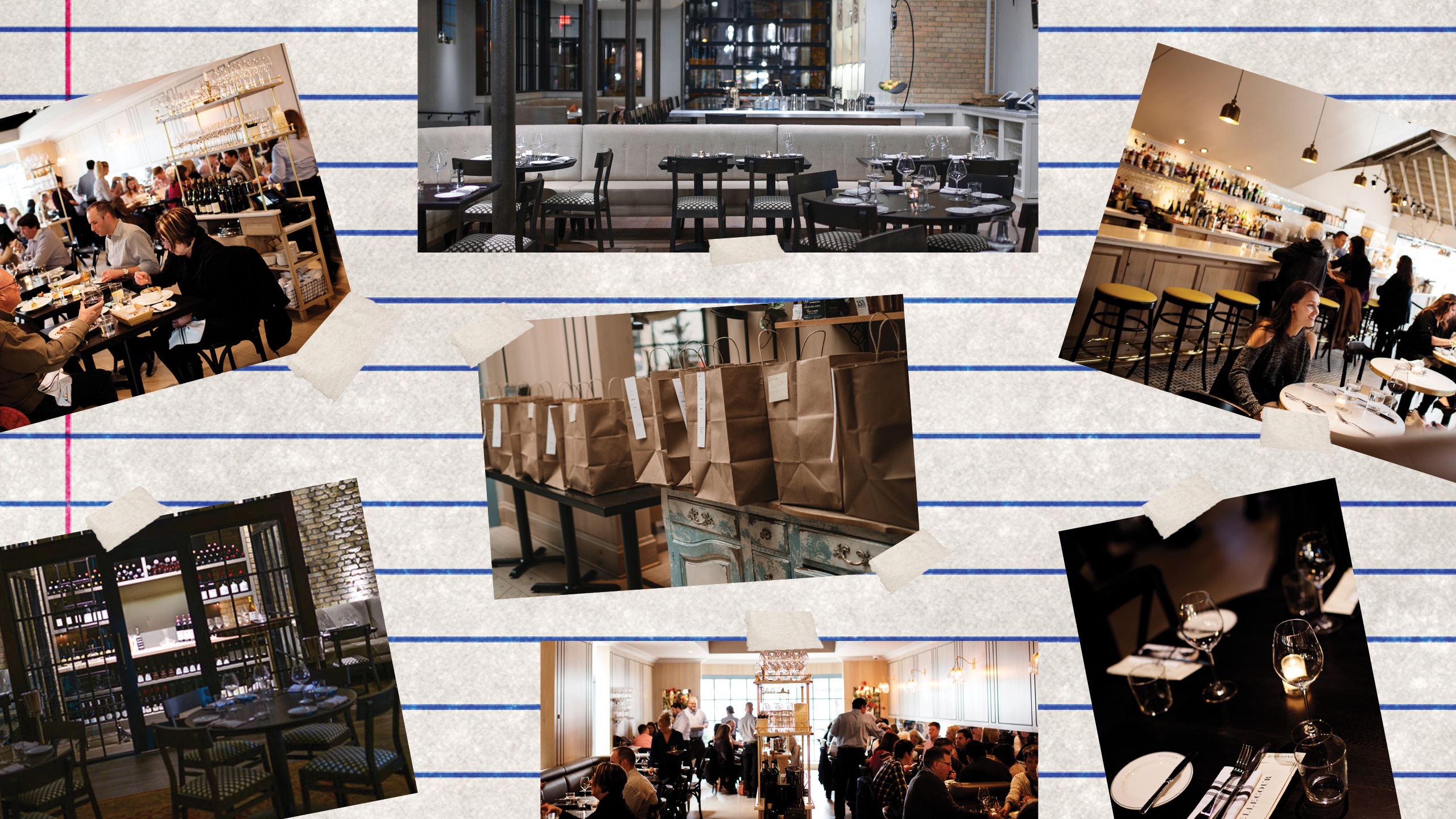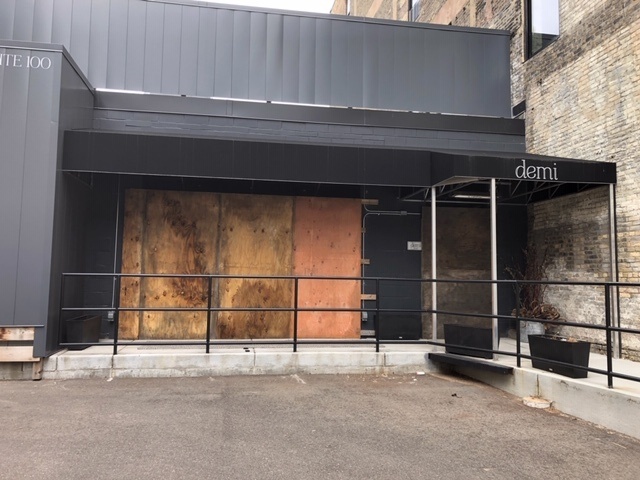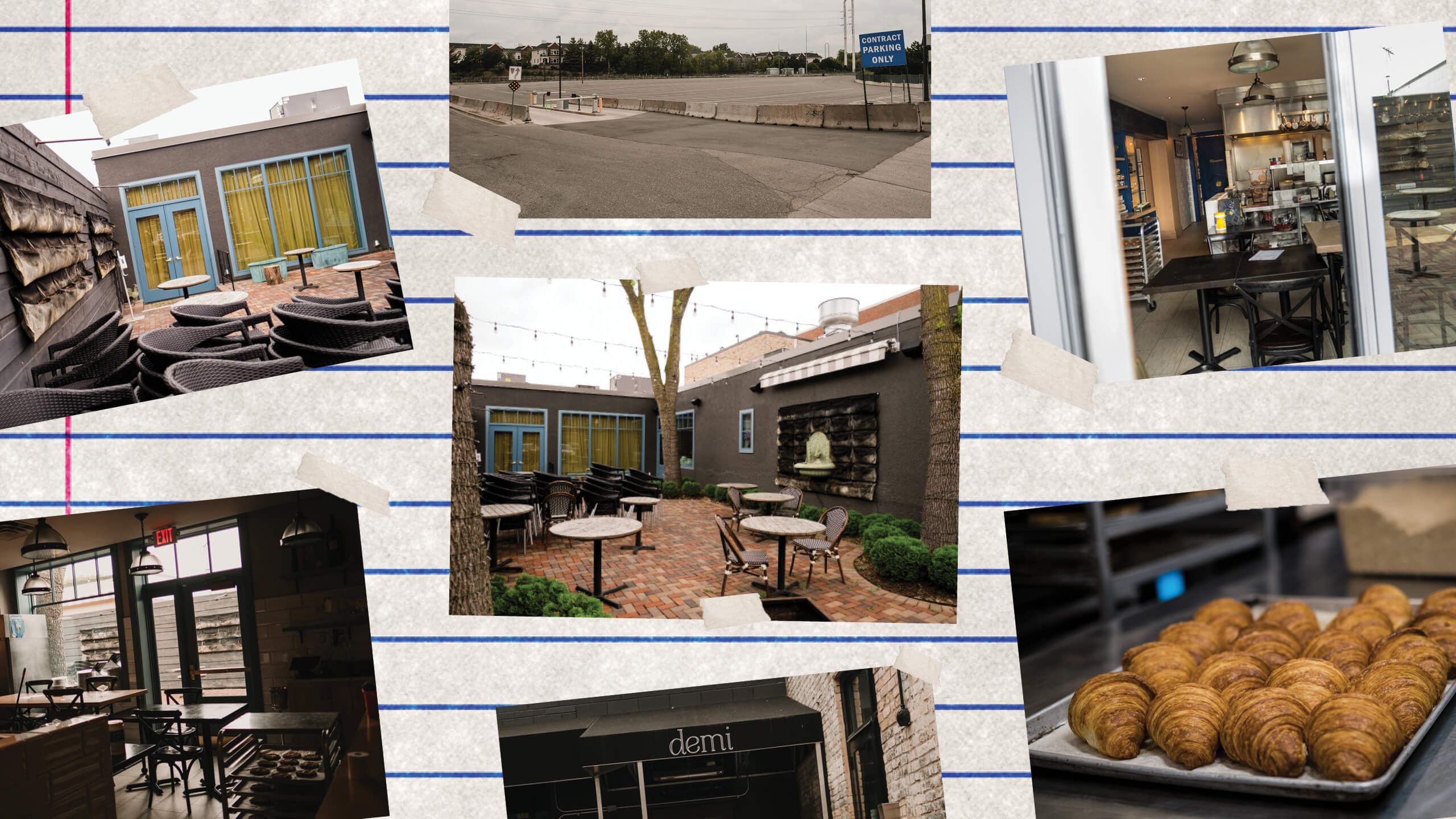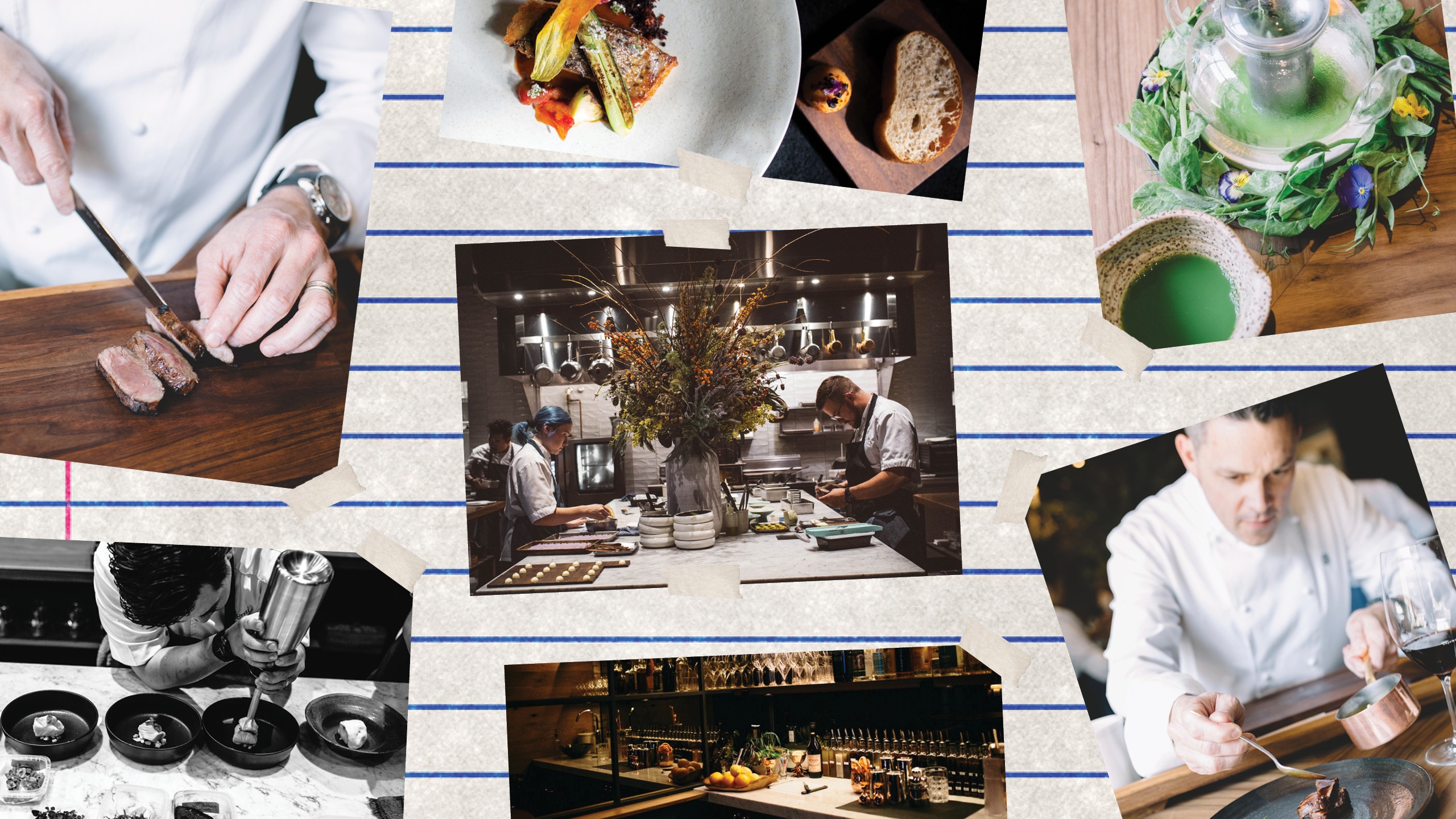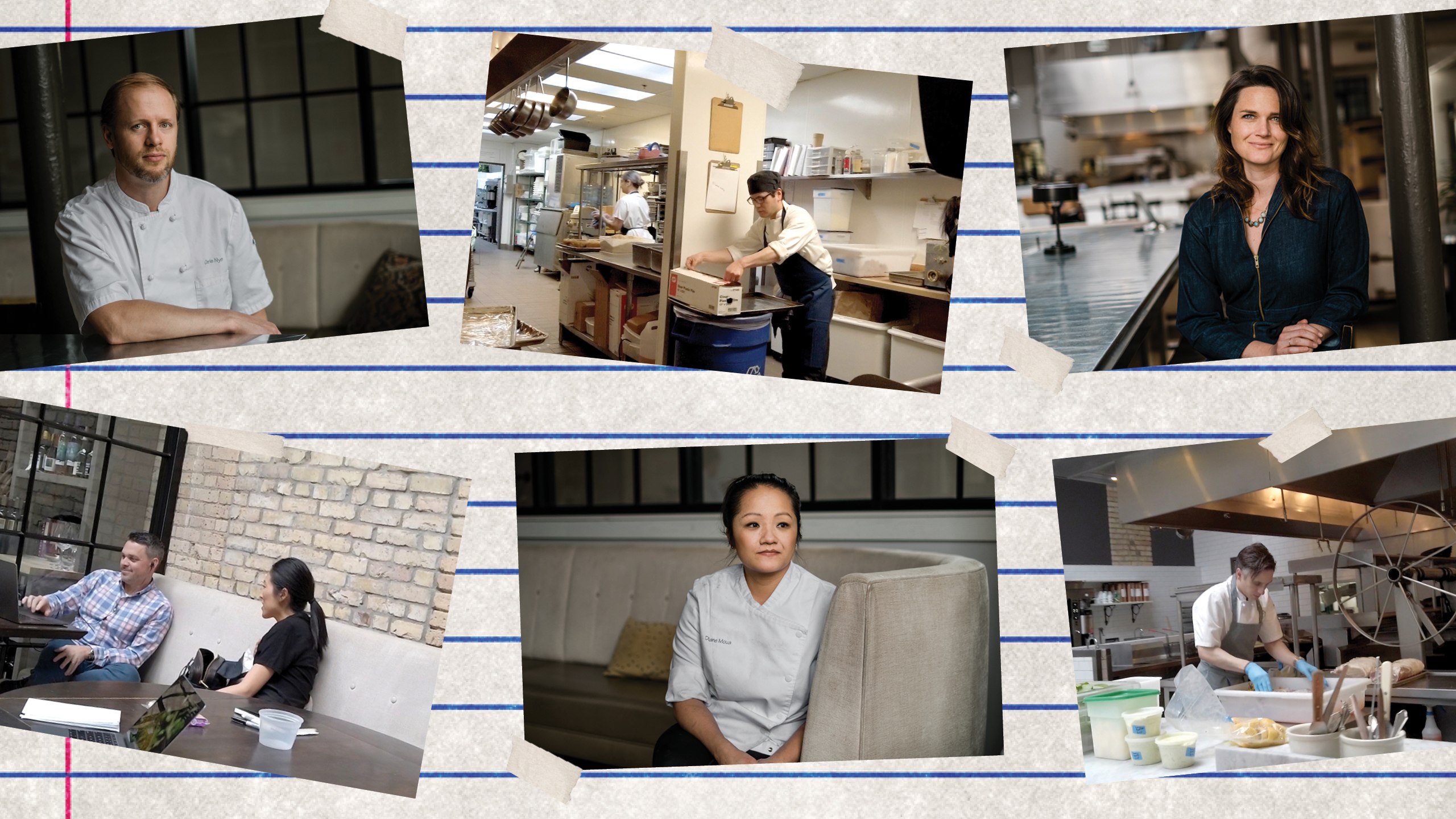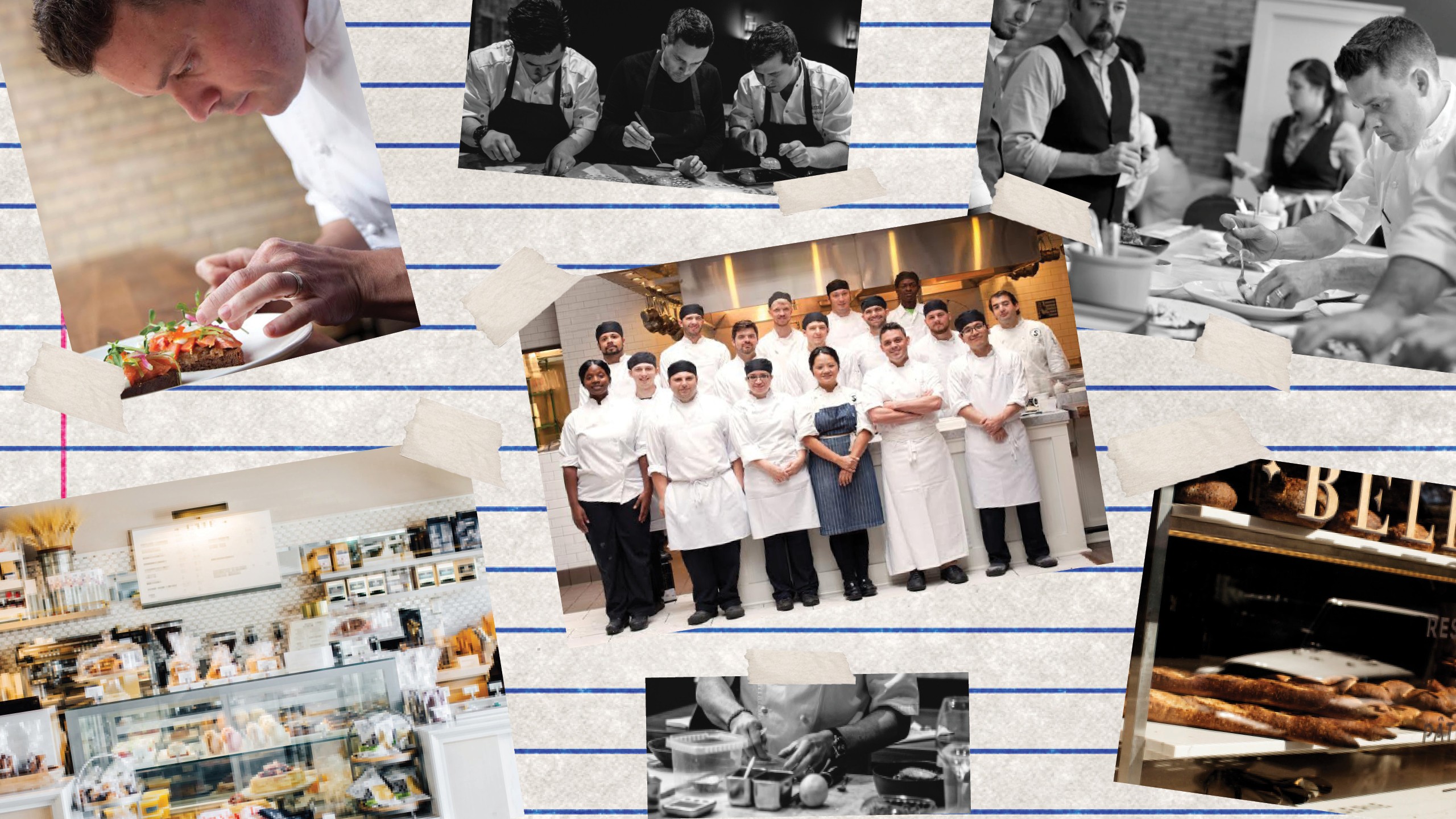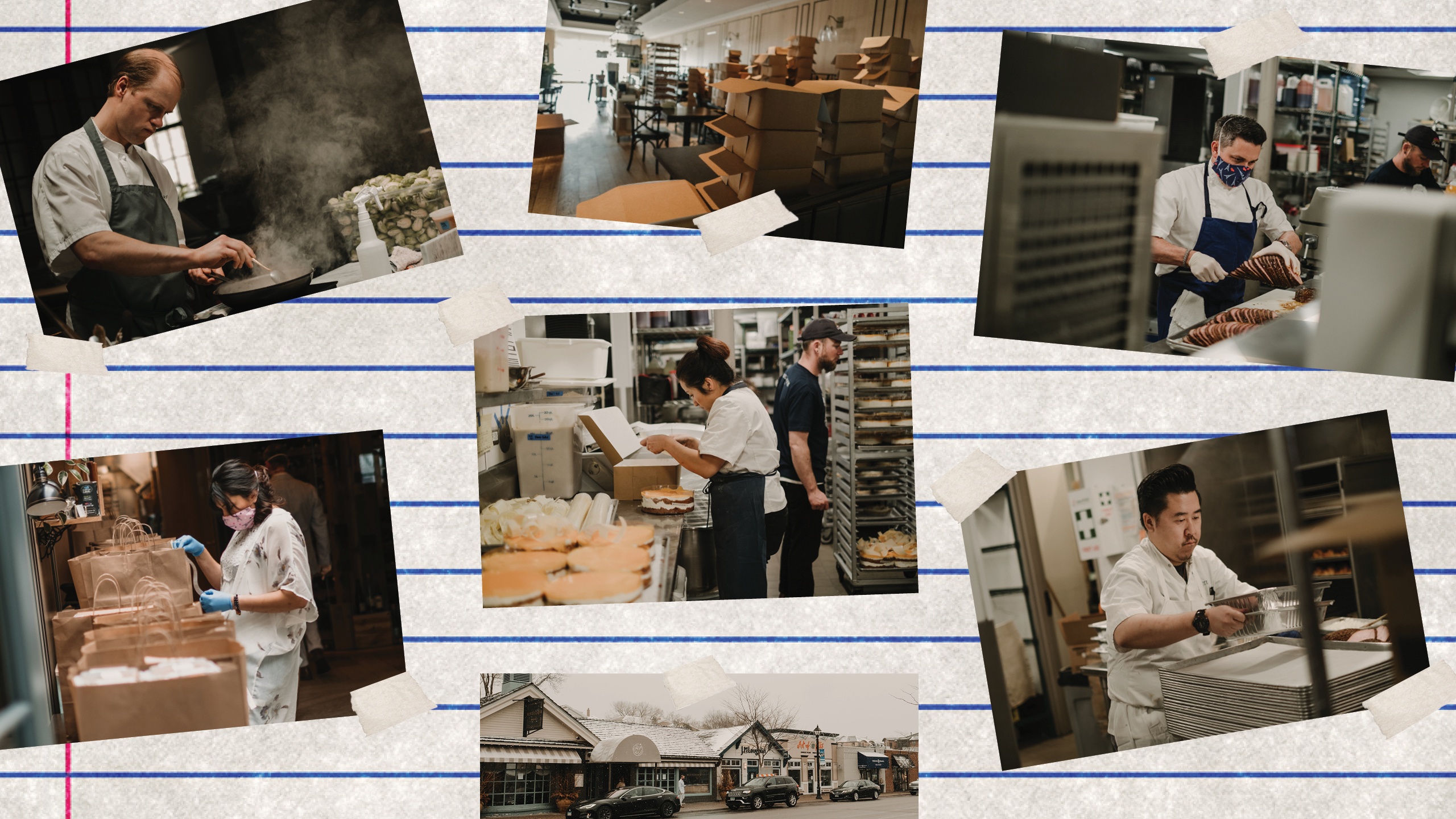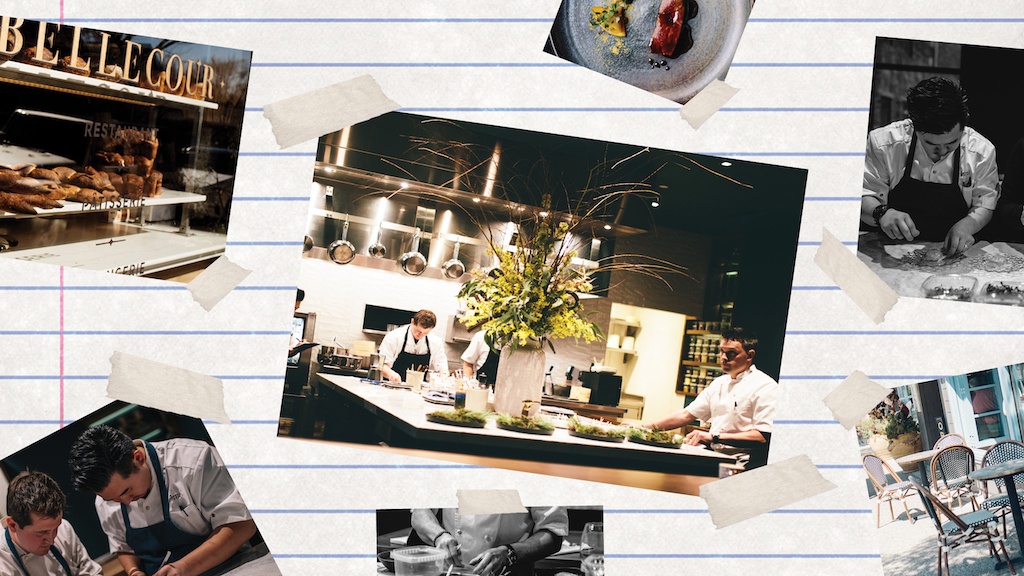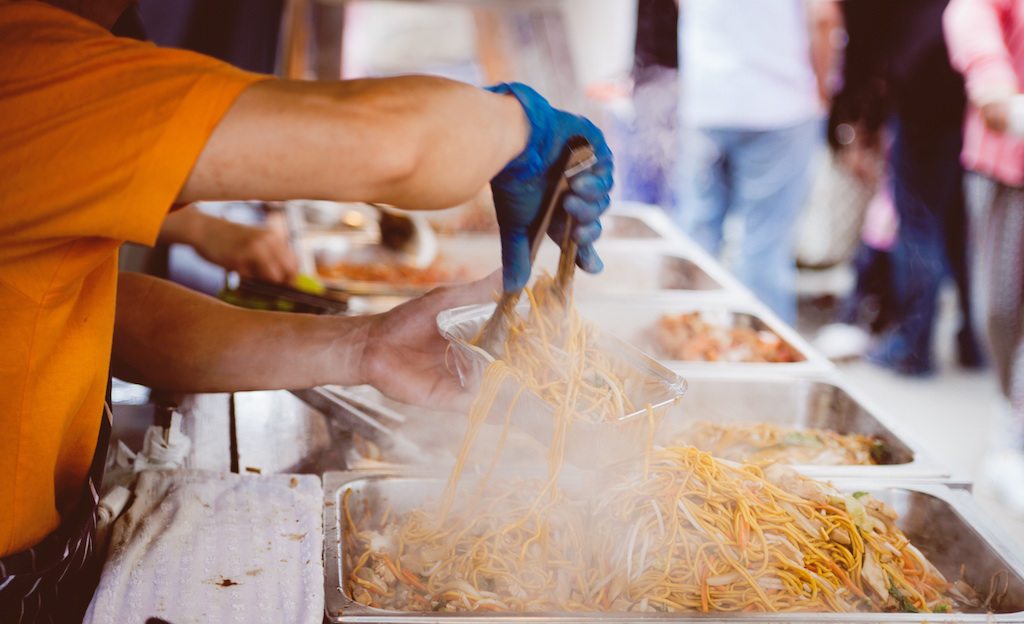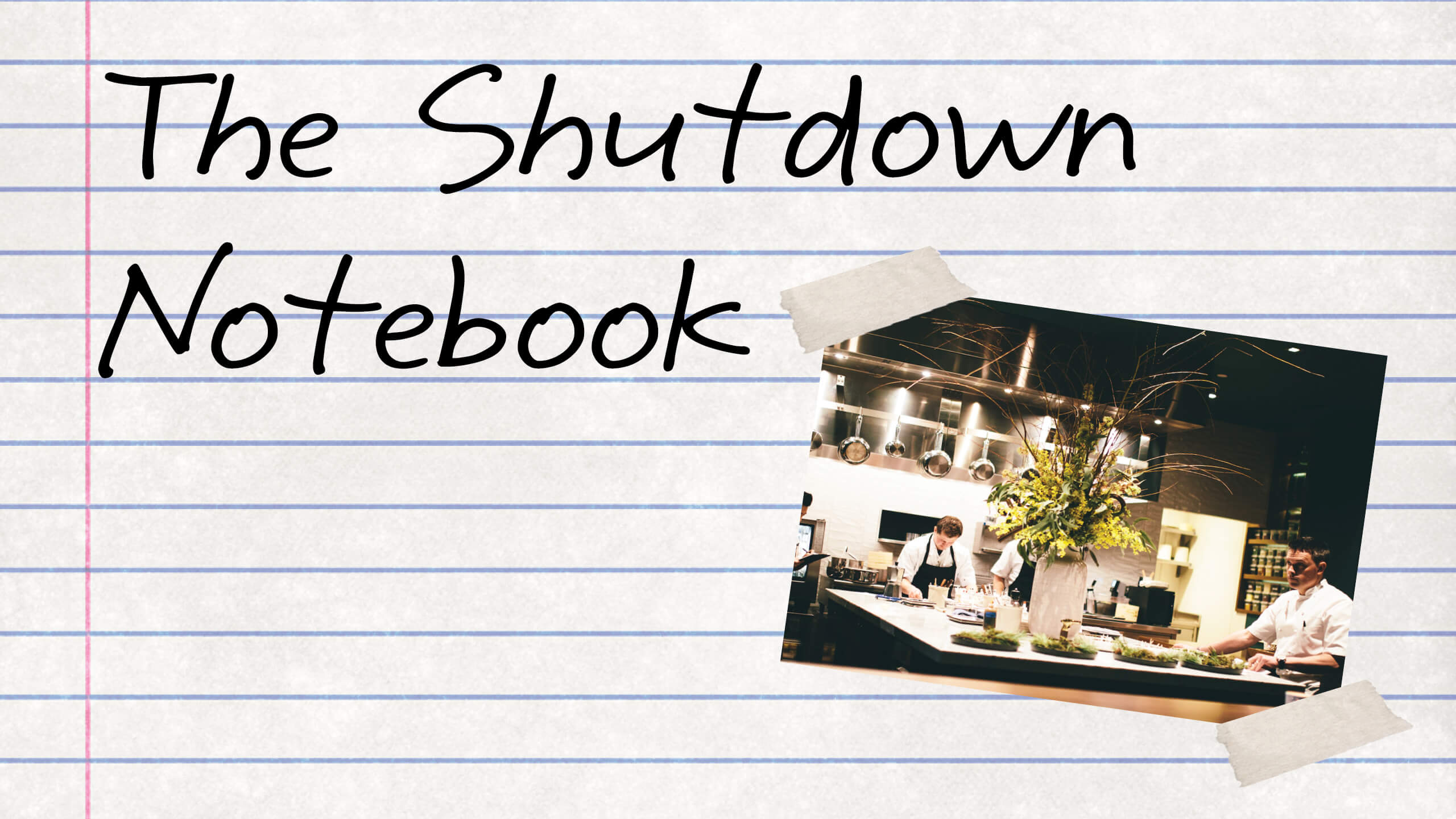
Photo by Libby Anderson/Flickr/Nicolas Raymond/Graphic by Talia Moore
A weekly series about one chef who closed three restaurants during the pandemic—and intends to get them back.
There is a math problem from elementary school that still haunts me, and it goes like this: A boat travels half the distance to the dock, and then half that distance, and half again. How long does it take the boat to arrive?
I figured it was designed to get us to practice fractions, so I dug right in, dividing halves into halves until the denominators had four digits. There was no point; it’s a trick problem. The boat never arrives, because there’s always half of the distance left, even if it is the width of a hair.
This offended my practical nature. If a boat is a hair’s width from the dock it has arrived, for all intents and purposes.
I mention this because restaurant owners have been traveling half the distance to the dock since the boatyard shut down in mid-March, as it were, and they still haven’t arrived. Or they have, in some states—only to find that the dock is awfully unstable, a rickety contraption that seems to have been built by committee, not consensus.
Some of them make the best of a bad situation and try not to wonder how long they can get by in such makeshift surroundings. Some lose their footing and fall back into the water, either because they weren’t prepared or because the portion of the dock where they’re standing is just too crowded. And some, like bar owners in Texas, Florida and Los Angeles and restaurateurs in New York City, wake up to find that their portion of the dock has been shut down. Again.
Chef Gavin Kaysen has staked out his piece of the landing: Bellecour bakery has been open for a week, the dining room opened June 30, and his other two restaurants, Demi and Spoon and Stable, will re-open on July 8 and 10, respectively. He has already missed part of the profitable Minneapolis summer, the months when restaurateurs make profits to tide them over through a brutal winter, and has to operate at half capacity indoors, with patio seating defined by six-foot spacing, for the rest of the season, if not beyond.
But there’s no going back. Kaysen shut down his Spoon and Stable take-out operation days after Bellecour opened because business was down 90 percent and, he said, “It made no sense, anymore.” People want to go outside, including at mealtime. He just has to hope that all his precautions work, even as he looks for more good ideas, wishes for stronger statewide guidelines, and keeps a wary eye on the Covid case numbers.
Some homecoming.
—
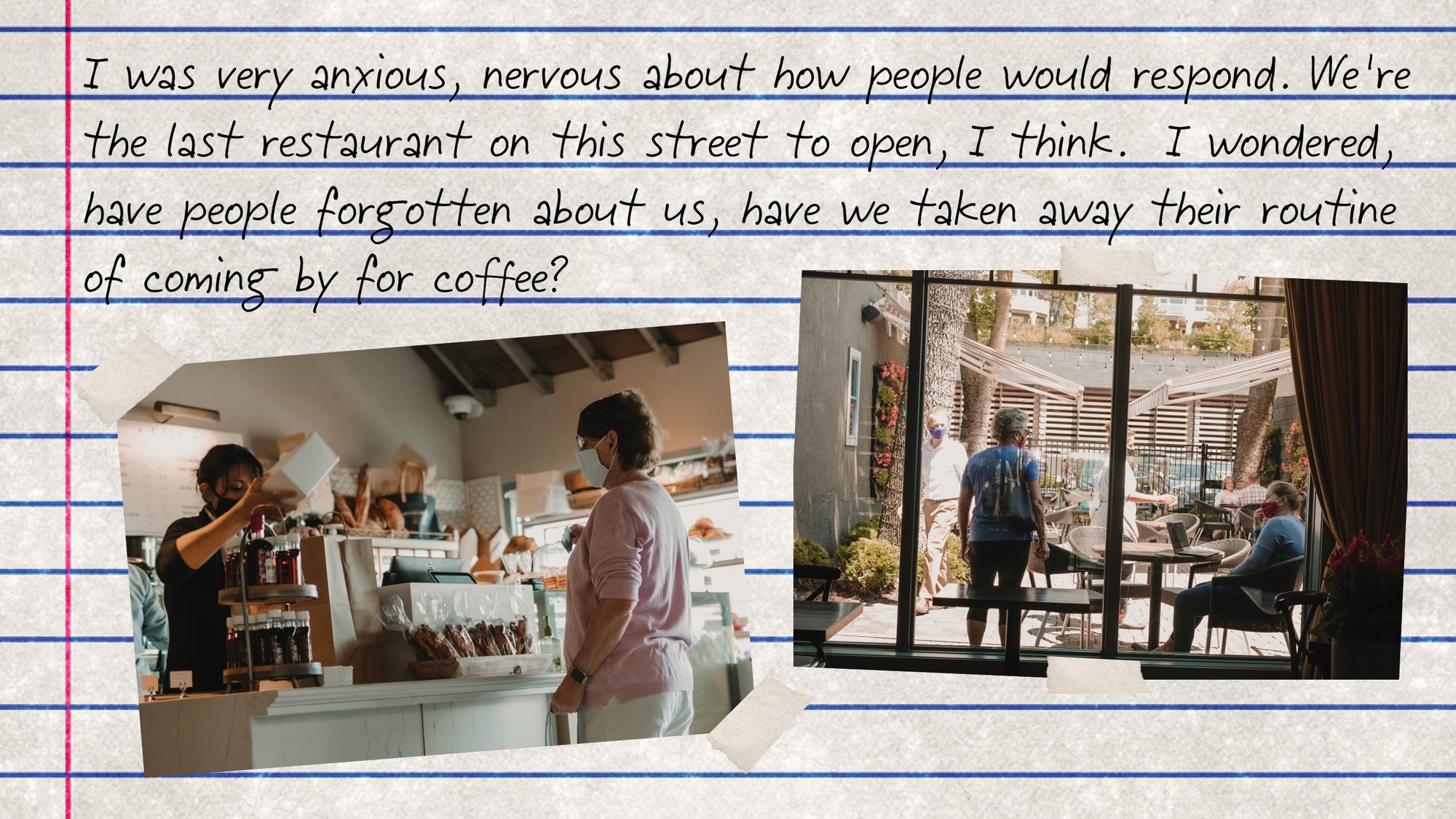
Dave Puente/Nicolas Raymond/Flickr/Graphic by Talia Moore
Showtime
The night before we reopened, I was up at 2:00, 3:00, 4:00, and 5:00, and then I just gave up and got out of bed. It felt more like an unknowing than an opening. I’ve tried to think about how to describe this: You’re getting ready to open, but you already know what it feels like to be open, so that kind of excitement isn’t there. It’s replaced by the unknowing, because of all the rules and regulations you’re under.
The whole team had spent the day cleaning, organizing everything, and then everybody stuck around to answer emails and get their work done. It’s nice to sit in your own space when it’s quiet and clean and organized and ready to open its doors for the first time. It’s nice. But this was a different feeling, not pure joy and excitement.
I was very anxious, nervous about how people would respond. We’re the last restaurant on this street to open, I think. I wondered: Have people forgotten about us, have we taken away their routine of coming by for coffee?
I didn’t have any expectations. The night before, I joked with my team: Who knows, maybe five people will show up. But lo and behold, there was a woman out there at 6:45 in the morning, waiting for us to open at seven. She was almost more excited than we were. It was consistently busy all day—and there are plenty of options around here, lots of cute little places to go. I mean, it’s great to see bodies in restaurants besides ours— but it also makes me nervous to see bodies in restaurants besides ours.
“The night before we opened, I was up at two, three, four, and five, and then I just gave up and got out of bed.”
Still, we did a great amount of business, and people were happy to have us back. When we were just doing take-out we got a call every single day to ask if we were doing our crepe cake, but we didn’t do it for takeout; it’s too much work. We’ve brought it back now: 18 layers of crepes, and in between is a diplomat cream, 50 percent pastry cream, 50 percent whipped cream, with granulated sugar on top like a crème brûlée. And then we let it sit for 24 hours, to solidify a bit, and it’s very satisfying to eat because when you cut it with a fork you can feel each layer break apart. When I walked into the kitchen on opening day they were already making 15 of them for the next day. That cake has a little mind of its own.
And we had over 80 reservations, in the mid-80s, for the first night of dinner service. Our guests have been great.
I’m glad we opened Bellecour first, of the three restaurants, because it feels better in terms of having lots of windows and sliding doors we can open. It’s thrilling to have people in the place, to know that they missed us being here. But by the same token, I keep asking myself, Is it okay that we’re open?
Right now we have about seven people working in the kitchen and seven in the dining room. Six have been here throughout, and the rest are full-timers who were here before we closed and have come back. But normal, for this time of year, would be 120 workers. It’s summer, so we get a lot of part-time people, and lots of staffers who can’t work weekends, or can’t work this time or that time. It gets crazy.
I slept really hard the night we opened, almost too hard, my body’s tired from sleeping that hard. The team members were tired, too. It’s a lot more time on your feet—and the other thing, especially with dinner service, is that it takes a lot of energy to talk to a lot of people over a long period of time. You’re working the room, talking to guests, you go into the kitchen, you’re working hard there. You always have to be on. You can’t ever turn it off. And that takes a lot of energy. But it felt so good just to have people come back into the space.
—

Dave Puente/Nicolas Raymond/Flickr/Graphic by Talia Moore
Mask politics
When you read what’s happening in Florida or Texas, where they’re reducing capacity even further and closing bars, it’s hard for people to assume that geography matters, that where you are will keep you safe. We’re not Florida or Texas—Minnesota had only four deaths the other day, that’s very minimal—but then I heard a report of a cluster of cases in bars, in a city a couple of hours from Minneapolis. June 12 weekend was the first weekend people were allowed to go to restaurants and bars, and they were basically doing pub crawls, not wearing masks.
I wish the governor would come out and say, We’ve all done a great job, we all want to be out in the Minnesota summer, but hey, everybody has to wear a mask. I hope he’ll do that. If two of your biggest cities have already mandated masks, and a recent cluster came from a smaller city and they’ve contact traced that back to bars, one would think the right thing to do would be to say: Let’s wear masks. Go out and drink, have a cocktail, go out to eat, but be responsible with each other.
Unfortunately the city of Wayzata, where Bellecour is, doesn’t require masks, though Minneapolis does, which makes it an easier talking point there. We require masks at Bellecour, regardless, and we have free ones for people. But I’m disappointed in Wayzata, and worried that we’ll lose business because people think we’ve taken a political stance, or just because it’s easier to eat elsewhere. I’m frustrated and disappointed.
We didn’t have any trouble on opening day, though. Nobody left. People said they were happy to see that there was discipline and consistency across the board. We’re following CDC guidelines, because it’s up to us to keep our team and our guests safe. We’ve been out of business for three-and-a-half months, and it’d be really sad if we lost customers just because people have to wear masks to walk to their tables. I’m hoping for a statewide mandate.
This part just scares the living shit out of me, the possibility that numbers will go up again. If we’re forced to close a second time, I don’t know what we’ll do. I don’t know what we can do.
—
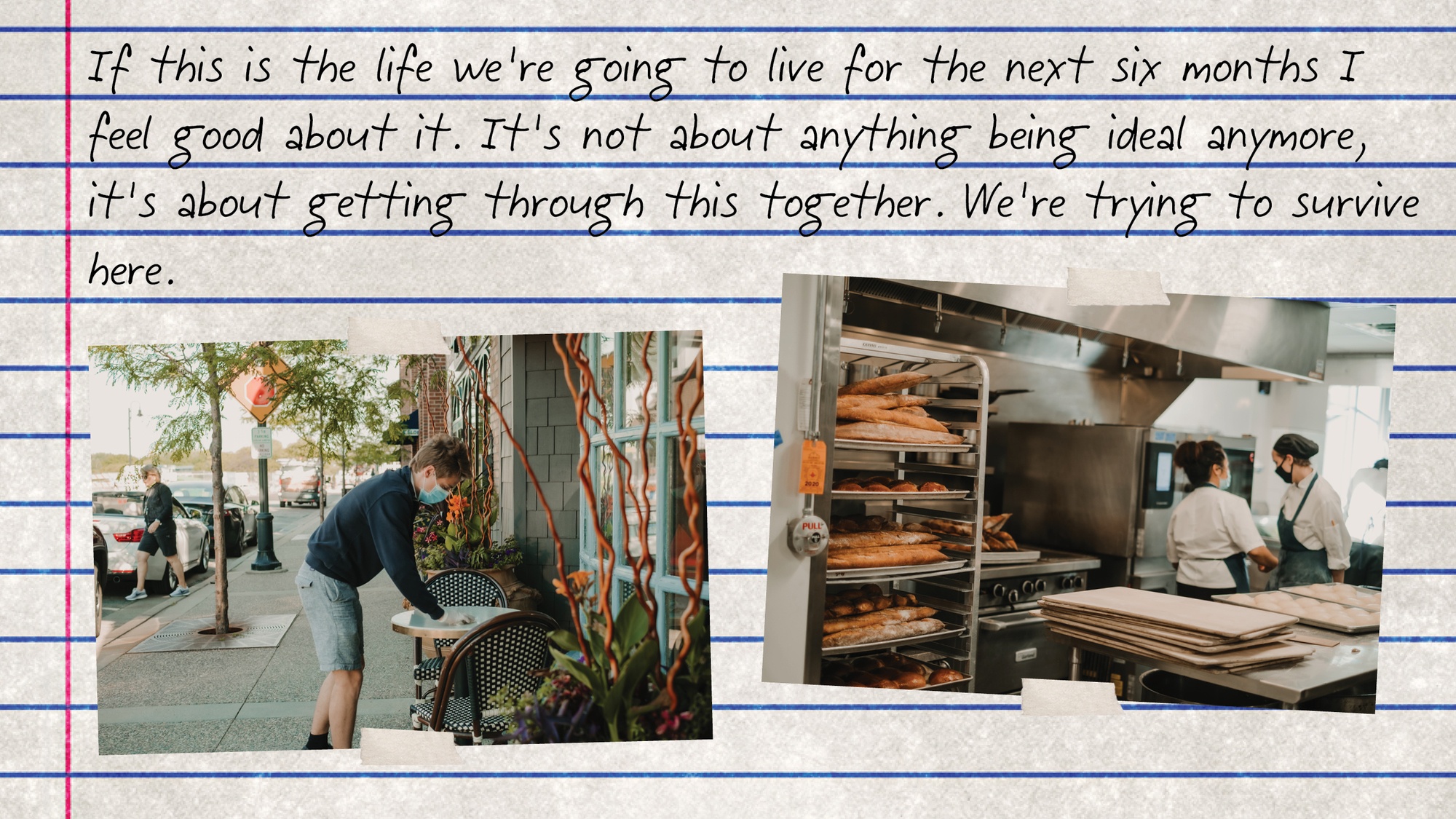
Dave Puente/Nicolas Raymond/Flickr/Graphic by Talia Moore
Chasing solutions
I went out to dinner with my wife at a place that friends of mine own—Hola Arepa—and I felt extremely safe. It’s an indoor/outdoor space, everyone was socially distant, wearing masks, and there was hand sanitizer on every table. I saw people cleaning everywhere, and the patrons were very respectful. One gentleman got up to go to the restroom; he didn’t have his mask on because he was eating, took two steps, and you could see him realize, Oops, I forgot my mask, so he went back and got it. I felt perfectly safe.
One thing they did, though I don’t know if it’ll be part of our service standard: On each table they had a little stand that held a laminated piece of paper that said either “just chillin’,” or, on the other side, “server please.” The server doesn’t come to your table unless you flip that piece of paper to “server please,” and then you have to put your mask on, the server approaches, and when you’re done you flip the paper back.
And then the next morning they emailed me to ask if I had any feedback.
This part just scares the living shit out of me, the possibility that numbers will go up again. If we’re forced to close a second time, I don’t know what we’ll do. I don’t know what we can do.
I’m going to go out to eat this weekend too. Two weekends in a row is more than I’ve ever done, I think, but I want to see how other people are doing this. We’re all trying to figure it out together. There’s no ego, no competition, it’s: This is what I’m doing that’s working, or not working, and does anyone have any suggestions.
If this is the life we’re going to live for the next six months I feel good about it. It’s not about anything being ideal any more, it’s about getting through this together. We’re trying to survive here. When we were just doing takeout, people had a soft spot for us and wanted us to stick around, so they supported us and ordered takeout. Now, if you really want us to stick around? Show up, being very respectful of rules we all have to abide by. It involves you, too, as a guest.
The question is, How much longer do we want to live through this? If only somebody were to come to us with a crystal ball: If you wear a mask for the next three months you will be past any issue with the virus and we will go back to our mask-free culture, versus, if you don’t, it’s going to be two or three years in this predicament.
It doesn’t feel weird to take precautions. You feel safe, frankly.
